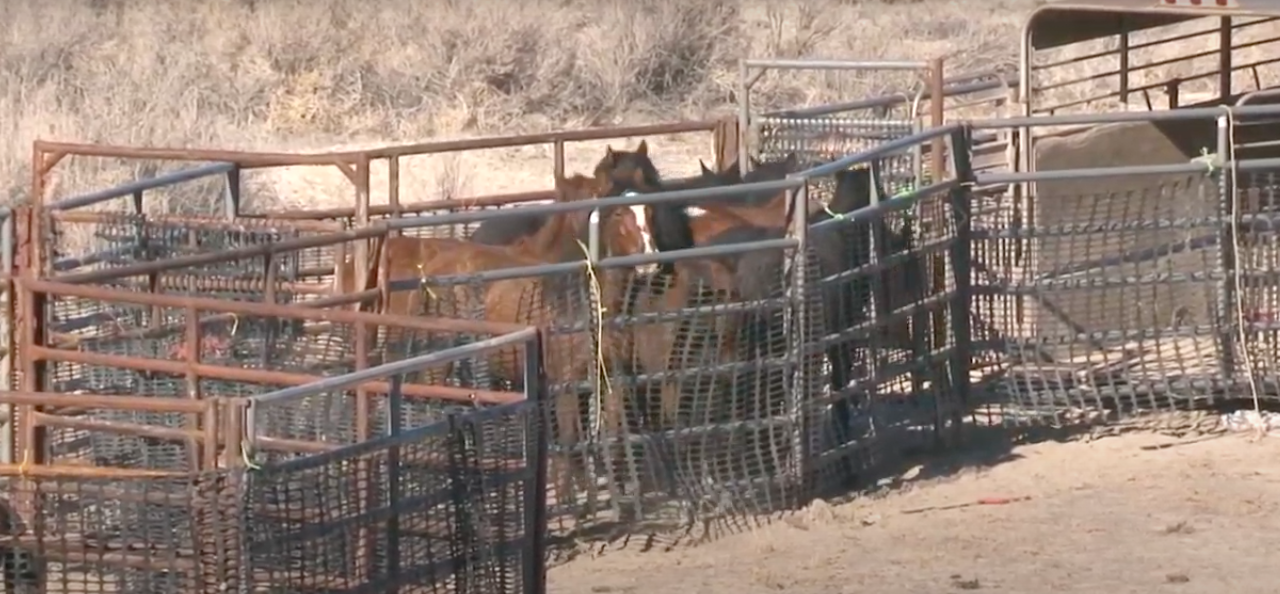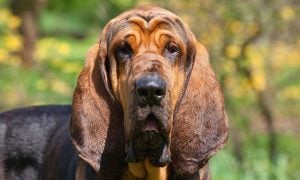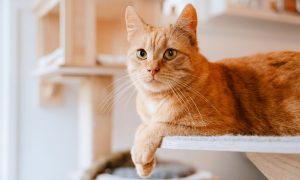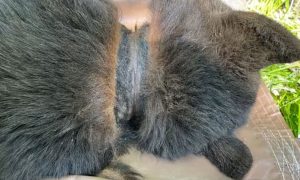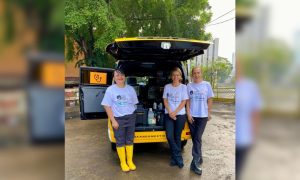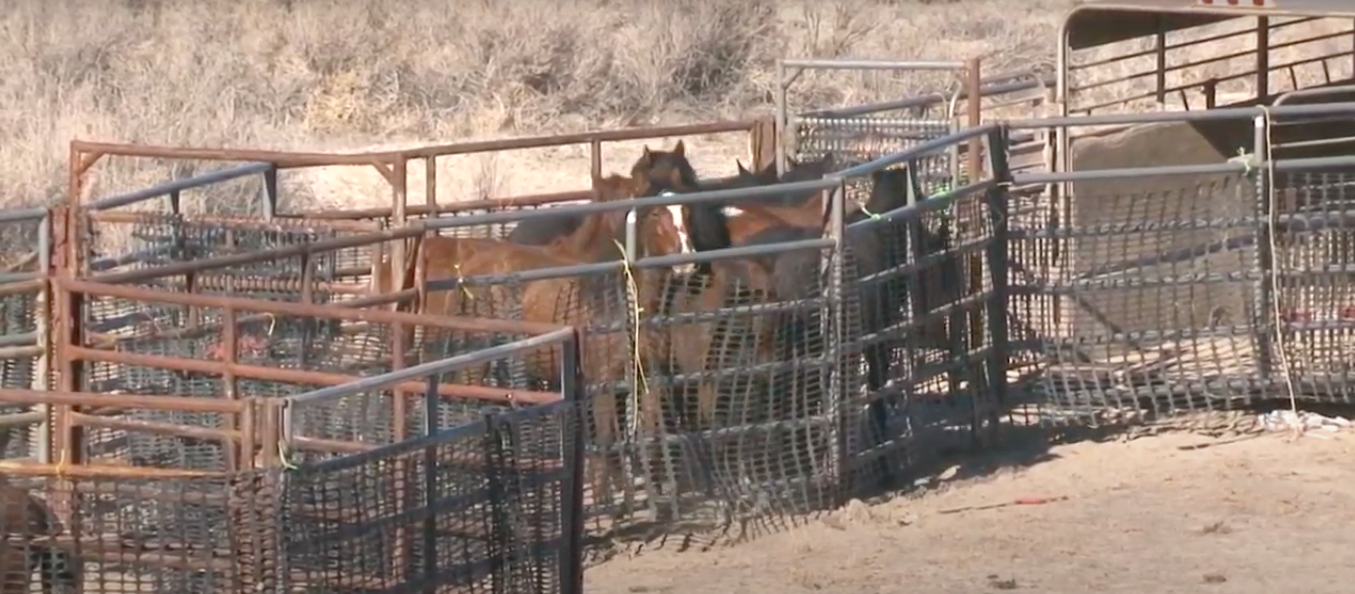A wild horse stands in the center of a corral. She’s not meant for this.
Days before, prior to a massive wild horse gathering operation in Utah, she was with her federally-protected family, running wild and free.
She has never been tamed or confined. She has stood in this corral for hours, fenced in by metal bars, but she hasn’t lost any of her fierce, wild grace.
She doesn’t look at the camera filming her. Instead, she moves closer to the captured wild horses surrounding her, neighing or crowding toward the corral bars.
For many, she’s an icon — an American symbol for freedom and independence. But to the Bureau of Land Management (BLM) — the federal agency tasked with managing wild horse populations — she has become an unmanageable threat.
The BLM says she and her family are a risk to wildlife habitats. But the ranchers’ livestock will be allowed to remain on the leased land and will likely benefit from the “reduced competition” for resources, according to the BLM.
The BLM also says that this wild mare and others like her, if not controlled, will deteriorate aquatic and riparian habitats, despite wild horses roaming the land — their land — for centuries.
The agency’s solution is to surgically sterilize her and dozens of others, using a complicated procedure called ovariectomy via colpotomy, in which a veterinarian shoves a metal surgical tool into an incision in her vulva and blindly attempts to crush her ovaries.
Despite her doomed fate, this mare could be considered lucky. She has survived the helicopter gather, desperately running from a noisy chopper across the land to a chute, and then, into a holding pen without injury. Some of her compatriots nationwide don’t survive this ordeal, suffering wire cuts from fences, spinal and neck injuries, broken bones, and miscarriages from the stress.
From here, the best-case scenario for the mare is that she remains uninjured in the holding pen, survives the surgery, doesn’t experience any infections or complications, returns to her herd area, and is re-accepted by the stallions and other mares despite her altered biological hormones.
The worst-case scenarios: She could hemorrhage and bleed to death, or become eviscerated with her entrails leaking through an opened incision. She could also return to her family, get rejected by the stallion and mares, and have to wander lost and alone for the rest of her life.
The BLM estimates these worst-case scenarios will impact less than 4 percent of wild mares who are surgically spayed. But those numbers are tentative. There haven’t been many studies conducted about ovariectomies via colpotomies on wild mares, and the federal agency acknowledged the risk in its documents for the project.
“All surgeries are associated with a risk of death,” the agency wrote. “There is no published data available to assess the mortality risk of any spay surgery in wild horses.”
Yet the BLM just got approved for a mass scale management of horses through surgical sterilization in the Confusion Herd Management Area — a 235,000-acre area of public and other-use land in the Millard and Juab counties, about 30 miles north of Garrison, Utah.
The area contains about 551 wild horses. The BLM plans to reduce that number to 70 over the next decade.
The management plan has been met with public outcry. During the public comment period, five animal welfare nonprofits and more than 4,500 citizens condemned the decimation of Confusion’s wild horses through surgical sterilization.
“Stop wasting my money and other taxpayers money,” wrote citizen Lisa Scharin in her comments. “Millions have been fighting for horses and the end of rounding them up. It is time to implement real management.
“These horses have lived in this habitat and other portions of our plains for centuries,” she continued. “They are icons, part of our history, culture, and success as a country. Protect them.”
But the BLM plans to move forward with the large-scale gather in late November. The sterilizations will happen sometime after that.
Unless they can be stopped.

Wild horses in the Cedar Mountain Herd Management Area in Utah, via Flickr.
Disappearing Icons of a Once Wild West
Deniz Bolbol, the director of advocacy for the wild horse nonprofit The Cloud Foundation, understands why wild horses have been protected since 1971, when Congress unanimously passed the Wild Free-Roaming Horses and Burros Act.
“Americans love wild horses,” she said. “These amazing animals must survive extreme temperatures and live in rugged terrains.”
They are creatures of intuition and instinct, relying on natural behaviors to find food, water, and shelter from the elements. Their herd social structure is essential to their survival, Bolbol said.
The land that the wild horses roam is prized by another group: cattle ranchers. These ranchers lease allotments of land from the BLM in units called AUMs — or the amount of forage land needed to sustain one cow, five sheep, or five goats for one month.
Eleven operators graze their livestock within the Confusion Herd Management area. The BLM has leased 25,312 AUMs per year. And Bolbol said that number of allotments grants livestock operators about 80 percent of forage land, leaving the remaining 20 percent for the wild horses.
The BLM denies that it removes wild horses to make room for more cattle grazing on public rangelands.
“This claim is totally false,” the agency said on its website. “The removal of wild horses and burros from public rangelands is carried out to ensure rangeland health, in accordance with land-use plans that are developed in an open, public process.”
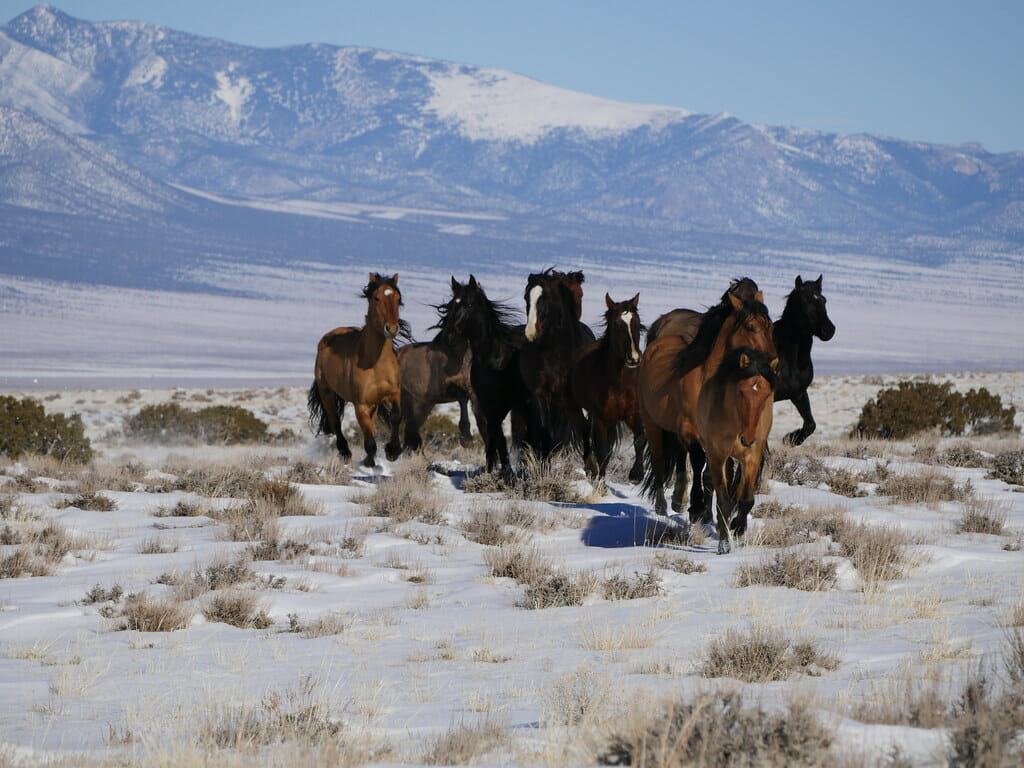
Wild Horses in Utah’s Sulphur Herd Management area, via Flickr.
The land-use plan the BLM leans on in its proposed plan for the Confusion area is the 1987 House Range Resource Area Resource Management Plan, which decided that for the area to maintain a “thriving natural ecological balance” only between 70 and 115 wild horses could remain.
The BLM leaned on those limits in 2002, when it removed 93 wild horses; in 2004, when it removed 154 horses; and in 2010, when it removed 162 horses.
Those limits also mean that the BLM plans to remove 481 more wild horses over the next 10 years, leaving one horse for every 3,357 acres at what wild horse experts call “an unnaturally low population size.”
“The proposed action will continue the business-as-usual approach of ‘management’ by removal and stockpiling more wild horses in off-range holding facilities,” the Animal Welfare Institute (AWI) criticized in its public opposition to the project.
Brutal and Dangerous Surgical Sterilizations
The Confusion Herd’s wild horses have a reputation with BLM staff for being “flighty” and easily startled.
Michael Gates, the acting district manager for the West Desert District, noted the horses would be “difficult” to manage because they can run for miles. They also leave the area as soon as they hear a vehicle approaching from two to three miles away, he wrote.
Gates wrote that surgical sterilizations had been performed on domestic wild horses for more than a hundred years. He decided, in his approval of the BLM’s plan, that surgical sterilizations would be “the minimum feasible level of management.” The approved plan calls for up to 50 percent of Confusion’s wild mares to be sterilized.
The approved method: ovariectomy via colpotomy.
Joanna Grossman, AWI’s equine program manager, described the procedure as a metal, rod-like tool being blindly inserted through a vaginal incision in order to sever and remove the ovaries of wild mares, all while they remain conscious.
The procedure is “blind,” meaning surgeons have to feel around once inside the horses in order to locate their ovaries, since they can’t see them.
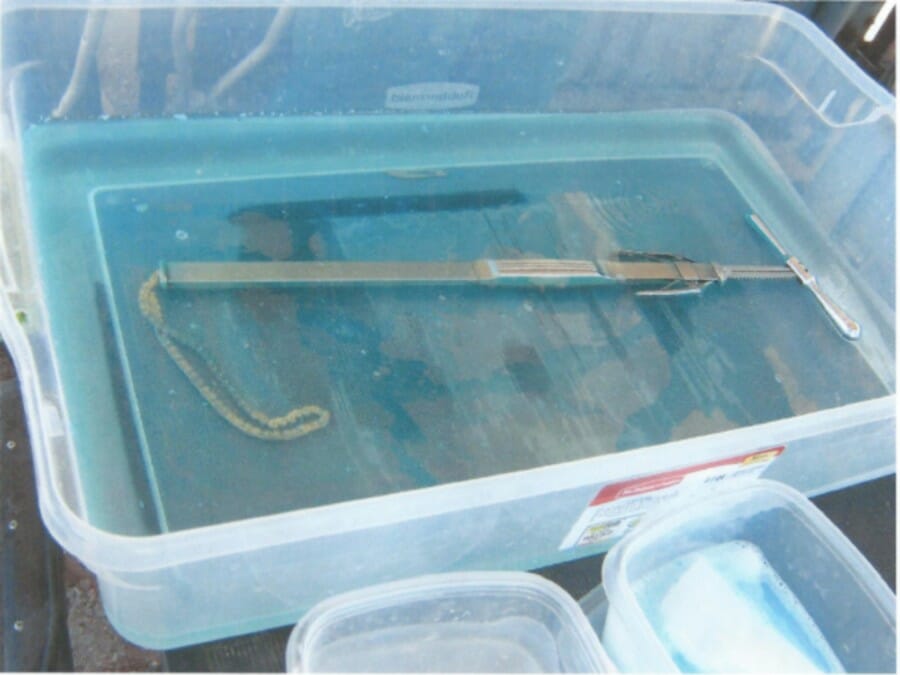
A chain ecraseur, the metal instrument shoved inside a wild mare and used to blindly sever her ovaries. Re-posted by Wild Horse Freedom Federation
Complications arising from the surgeries include post-operative pain, the abortion of foals, and death.
Hemorrhaging or bleeding to death is possible, as well as evisceration — an extremely painful condition in which the horse’s intestines protrude through the incision.
In 2013, the National Academy of Sciences advised the BLM not to use ovariectomies on wild mares due to the risks of trauma and infection.
Grossman added that the same “flightiness” of the horses cited for the approved plan made the likelihood of complications much higher than studies conducted on domestic horses.
“These are horses that have never been handled,” she said. “Ungentled wild horses taken off the range are going to present a host of challenges you’re not going to see with domestic horses.
“With what the BLM is envisioning, you would have frightened and panicked wild horses torn from their family bands that may never have been within 100 yards of a person,” she continued. “These are immense and powerful animals. There are risks to the veterinarians and handlers involved as well.”
Four years ago, the BLM attempted an ovariectomy via colpotomy experiment on wild mares in the Warm Springs Herd Management Area in Oregon. More than 8,300 citizens opposed the experiments. Eighty veterinarians also denounced the pitch, writing to the Secretary of Interior that the procedure was dangerous even for domestic horses and likely would have much higher complication rates in wild horses. Animal welfare groups sued. Two universities supporting the project backed out, taking their funding with them, and BLM terminated the experiments.
While animal welfare groups cite the failed Oregon experiments and the lack of research as reasons not to incorporate surgical sterilizations into mass-scale proposals, the BLM says it can basically do whatever it wants.
“Given the published scientific studies that are already available, BLM is not required to have completed its own ovariectomy by colpotomy study, such as the one that was proposed to have taken place at the Warm Springs HMA in Oregon, before using the method in wild horse management,” the agency wrote in its proposed plan.
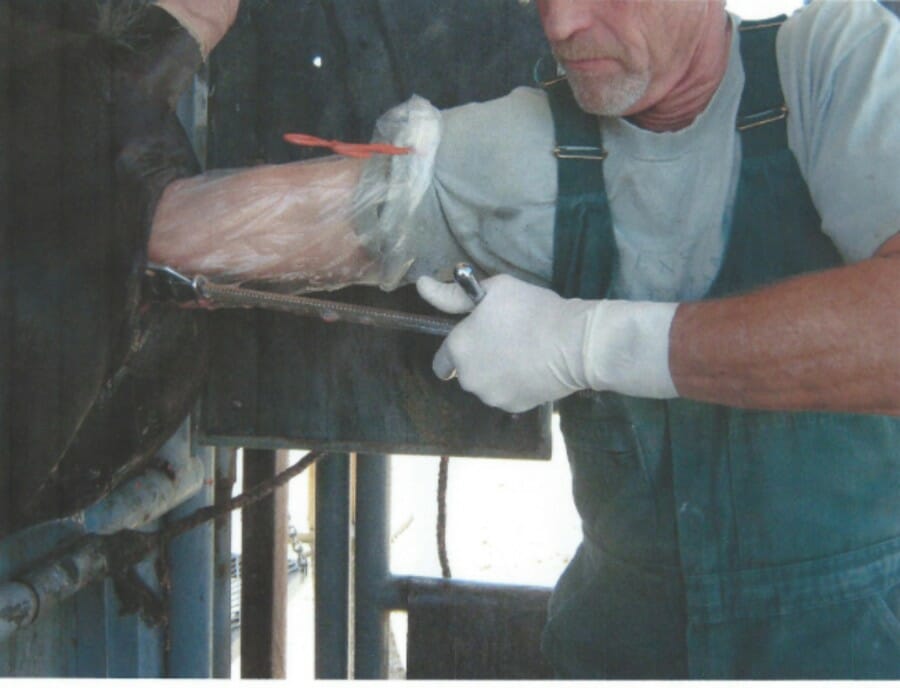
A surgeon inserting a chain ecraseur into a horse to remove her ovaries. Reposted by Wild Horse Freedom Federation.
The “published scientific studies” cited by the BLM in its documents as “ample evidence” that the procedure is safe actually show the opposite.
Ovariectomies performed by Leon Pielstick, a veterinarian with the BLM for decades, resulted in two fatalities, in which one mare bled to death internally and another got sick, aborted her foal, and died.
In another study, one mare strained for days after a failed attempt to stitch up the colpotomy incision. Another required multiple blood transfusions to survive — a set of circumstances the BLM admits would not be possible for the Confusion mares, as blood from acceptable donors would not be available.
The BLM also referenced a study at the Sheldon Wildlife Refuge Area, in which 114 feral mares were ovariectomized with a 2 percent mortality rate.
For wild horse experts, the complication rate and likely painful deaths are unacceptable.
“I’m not sure why we would accept that a best-case scenario of 2 percent is good enough or appropriate for federally protected animals the BLM is mandated to care for,” Grossman said.
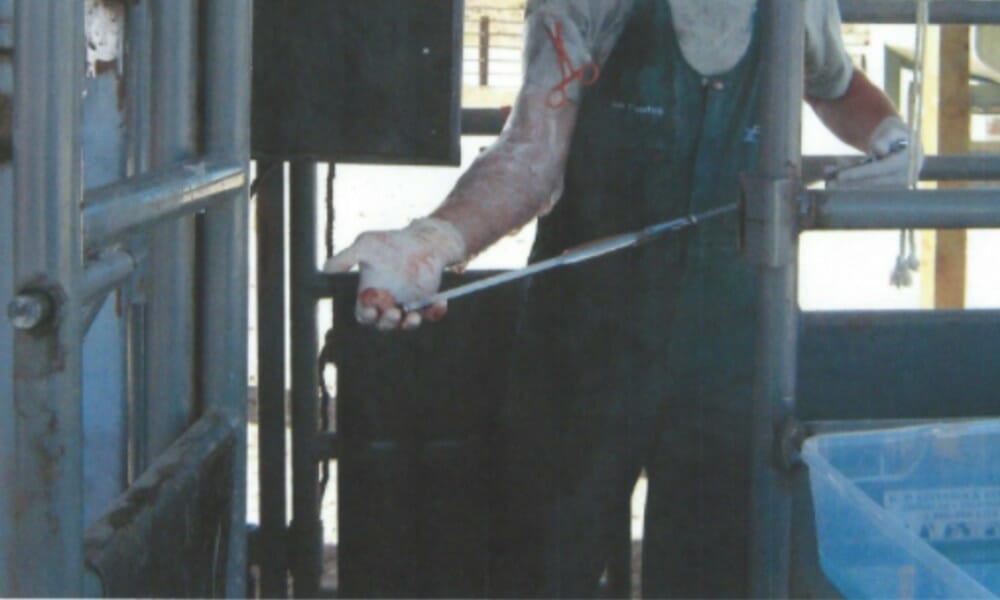
A chain ecraseur and a severed ovary from an ovariectomy via colpotomy. Reposted via Wild Horse Freedom Federation.
Is There a Better Way?
Unequivocally, wild horse experts say there is a better way.
The Porcine Zona Pellucida (PZP) vaccine, which is administered via injection, costs about $30 per dose and is at least 90 percent effective. It has no risk of death or deformity to wild horses and no adverse effects on the herd. And it could reduce, or even eliminate, the need for dangerous roundups.
PZP can also be used safely on pregnant mares, while the abortion risks associated with ovariectomy via colpotomy has caused BLM to nix treating pregnant mares under its approved plan.
“[PZP] would be far more efficient than rounding up mares, checking to see which ones are pregnant, keeping them in holding at significant costs for an extended period, and then ovariectomizing them after they give birth, and presumably separating them from their foals,” Grossman said.
The BLM said it considered PZP as an alternative but decided against it, stating the vaccine would have to be administered every two years, would require twice as many animals to be gathered, and would be too expensive with an anticipated cost of $2,900 per mare per year.
As for how much the ovariectomies will cost over the next decade, that’s anyone’s guess, Grossman said.
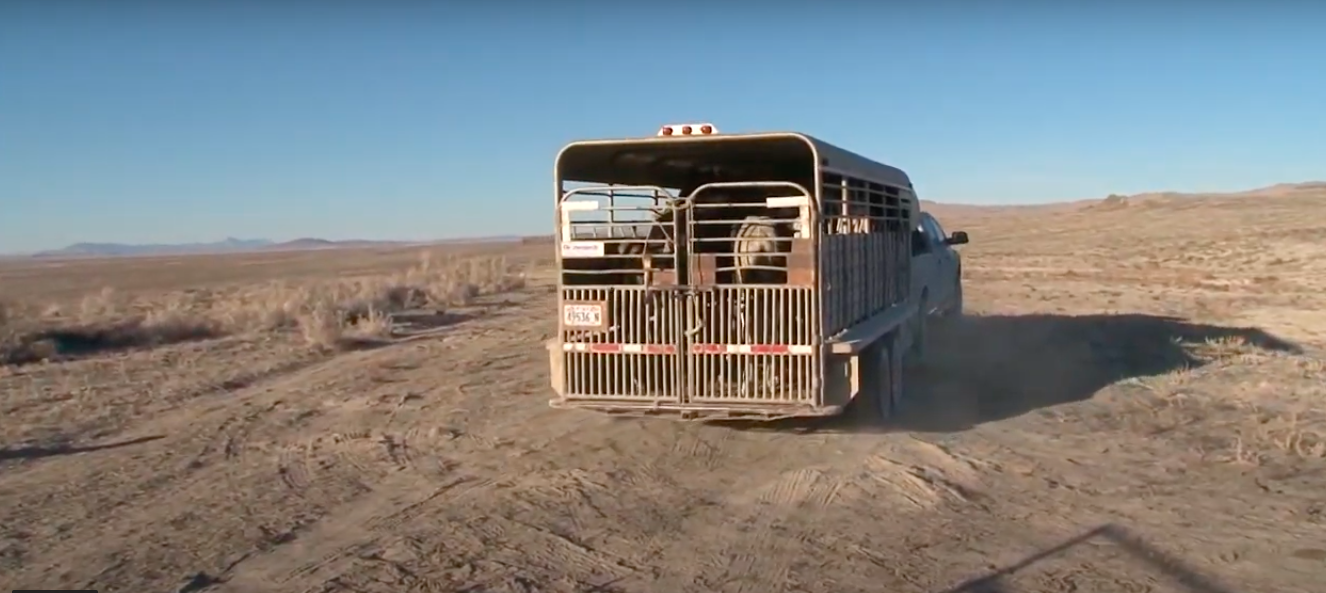
Wild horses being carted away during a BLM gathering option. Via BLM public stock.
In its 10-year plan, the BLM noted anticipated costs of about $250 to $300 per surgical spaying for mares. But that doesn’t include a decade’s worth of holding costs, medication and sedatives, post-operative care, transportation, veterinary costs, or roundups.
Grossman said that data from USAspending.gov showed how expensive roundups alone can be. A single contractor, Cattoor Livestock Roundup Inc., received $20 million from the BLM from 2008 to 2010 for gathering operations. Another contractor, SunJ Livestock Inc., has received more than $8 million since 2010.
“We don’t have a great sense for how much this is all going to cost because the BLM hasn’t been transparent about that,” she said. “Regardless of the exact dollar amount, we should be concerned that the agency is spending taxpayer dollars on something overwhelmingly opposed by the American public.”
The Cloud Foundation also supports PZP to humanely manage wild horse populations.
“Instead of focusing research efforts to make PZP longer-lasting, the BLM wastes tens of millions of tax dollars pursuing surgeries and drugs that will destroy the very behaviors that make wild horses wild,” Bolbol said.
Although the public comment period has closed, you can still make a difference by contacting your members of Congress, Grossman said.
“Federal lawmakers weighing in against the BLM’s prior attempt to ovariectomize mares was instrumental in stopping the BLM from moving forward,” she said. “Here again, members of Congress have a chance to condemn the agency’s plan.”
In addition to contacting your members of Congress, sign Lady Freethinker’s petition urging Speaker of the U.S. House of Representatives Nancy Pelosi and U.S. Senator Majority Leader Mitch McConnel to halt the brutal and dangerous plan to surgically sterilize wild mares in Utah.
SIGN: Save Utah’s Wild Horses from Deadly Surgical Sterilization

